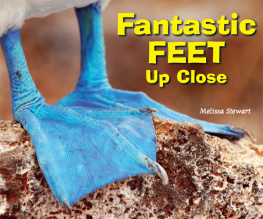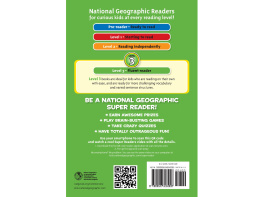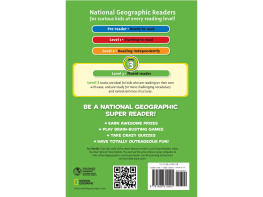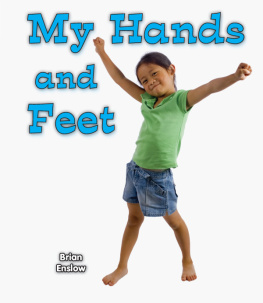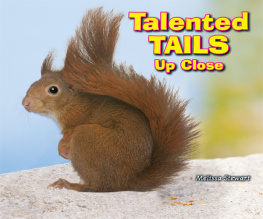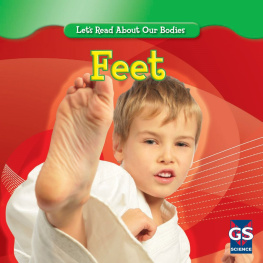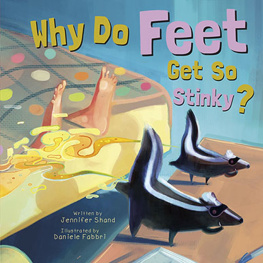FANCY FEET
Did you know that one sea star has hundreds of feet? Or that a bluefooted booby dances on its blue feet? Learn all about how animals use their feet to run, dig, and stay safe.
"Readers of all agesbut especially early readerswill find these fact-filled books fascinating!"
Allan A. De Fina, PhD, Series Literacy Consultant
Dean, College of Education
Professor of Literacy Education
New Jersey City University
Past President of the New Jersey Reading Association
"From the end of the nose to the tip of the tail and many stops in between, this series introduces young readers to a variety of interesting details among a diversity of organisms."
Helen Hess, PhD, Science Consultant
Professor of Biology
College of the Atlantic
Bar Harbor, Maine
About the Author
Trained as both a scientist and journalist, Melissa Stewart is the award-winning author of more than 100 books for young readers. While gathering information for her books, Melissa has explored tropical forests in Costa Rica, gone on safari in Kenya and Tanzania, and swum with sea lions in the Galpagos Islands.

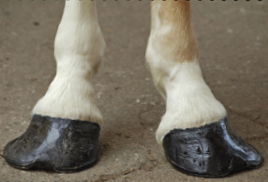
Image Credit: Shutterstock.com
hooves (HOOVZ)The hard, thick feet of horses and some other animals.
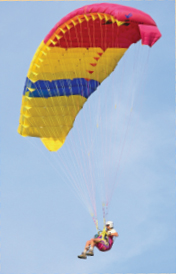
Image Credit: 2011 Photos.com, a division of Getty Images
parachute (PAER uh shoot)A large cloth that helps a person or a package float down slowly from the sky.
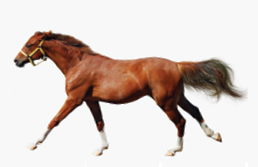
Image Credit: Shutterstock.com
stride (STRIHD)A long step.
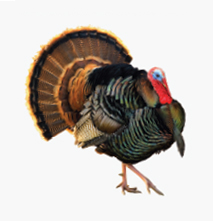
Image Credit: Shutterstock.com
strut (STRUHT)To walk in a way that shows other people you think you are important.

Image Credit: blickwinkel/Alamy
Animals use their feet in all kinds of ways. This frog has huge feet. They act like a parachute as the frog falls from a tree in the forest. They also help the frog land with a gentle plop. What a great trick!

Image Credit: Stephen Dalton

Image Credit: iStockphoto.com: Charles Gibson
What has feet as big as a dinner plate but only two toes? A camel does. As it walks, its toes spread wide. That way the camel does not sink into the sand.

Image Credit: Studio Carlo Dani/Animals Animals/Earth Scenes

Image Credit: Shutterstock.com
A sea star has hundreds of tiny feet. They are on the bottom of each arm. The feet hold on tight to rocks. They also help the sea star move from place to place.

Image Credit: Shutterstock.com

Image Credit: Roger de Montfort
How does this bird attract a mate? He dances. He spreads his wings wide and whistles. Then he struts, slides, shuffles, and stomps his bright blue feet. What a show!
Webbed feet are good for swimming too. They help the bird paddle through the water.

Image Credit: Tui De Roy/Minden Pictures

Image Credit: OSF/Photolibrary
A gecko has many enemies. But it can stay safe by darting up and down trees. It can zip across branches, too. It can even walk on ceilings. How can a gecko do all that? Its feet have millions of hairs. They can grab onto all kinds of surfaces. They can even hold onto glass.

Image Credit: Philippe Psaila

Image Credit: Hedda Gjerpen
A horses feet are called hooves. They look like the horses big, thick toenails. A horse runs on its tiptoes, so it can stretch farther than other animals with each stride. Thats one reason why a horse is so fast.

Image Credit: Shutterstock.com

Image Credit: Photo Researchers, Inc.: Nigel J. Dennis
An aardvark (AHRD vahrk) is the fastest digger on Earth. Its feet have long claws. Each claw is shaped like a shovel. An aardvarks feet are perfect for digging up ants and termites to eat.

Image Credit: Abpl Image Library/Animals Animals

Image Credit: 2011 Photos.com, a division of Getty Images
You are an animal, too. You have two feet. They take you anywhere you want to go.
You take about eight thousand steps every day. In your life, youll walk far enough to circle Earth four and a half times!

Image Credit: 2011 Photos.com, a division of Getty Images

